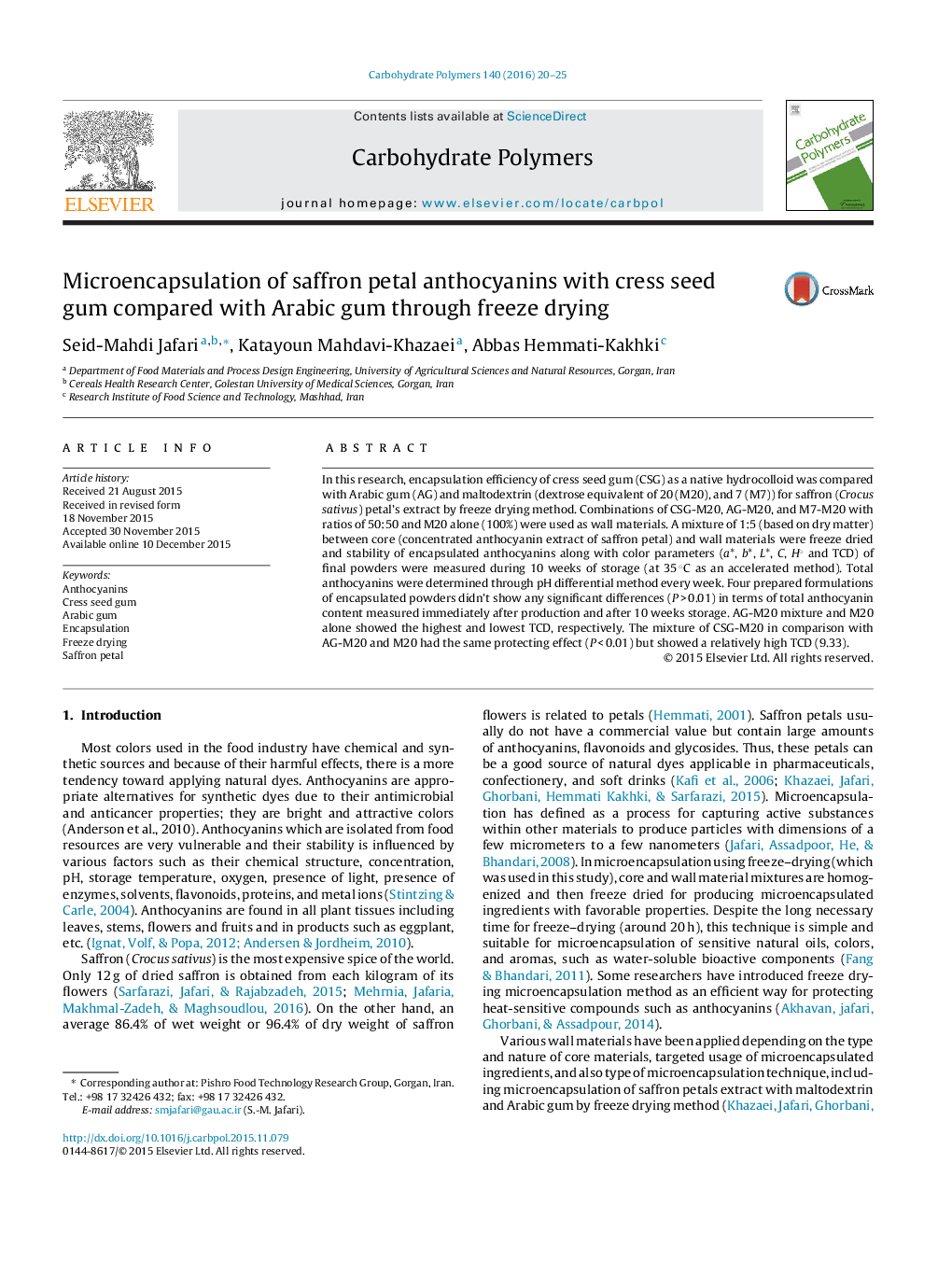| Article ID | Journal | Published Year | Pages | File Type |
|---|---|---|---|---|
| 1383431 | Carbohydrate Polymers | 2016 | 6 Pages |
•Encapsulation efficiency of cress seed gum (CSG) was evaluated for anthocyanins.•AG-M20 mixture and M20 alone showed the highest and lowest TCD, respectively.•The mixture of CSG-M20 had same protecting effect for anthocyanins as Ag-M20.•Cress seed gum resulted in relatively high encapsulation efficiency.
In this research, encapsulation efficiency of cress seed gum (CSG) as a native hydrocolloid was compared with Arabic gum (AG) and maltodextrin (dextrose equivalent of 20 (M20), and 7 (M7)) for saffron (Crocus sativus) petal's extract by freeze drying method. Combinations of CSG-M20, AG-M20, and M7-M20 with ratios of 50:50 and M20 alone (100%) were used as wall materials. A mixture of 1:5 (based on dry matter) between core (concentrated anthocyanin extract of saffron petal) and wall materials were freeze dried and stability of encapsulated anthocyanins along with color parameters (a*, b*, L*, C, H° and TCD) of final powders were measured during 10 weeks of storage (at 35 °C as an accelerated method). Total anthocyanins were determined through pH differential method every week. Four prepared formulations of encapsulated powders didn’t show any significant differences (P > 0.01) in terms of total anthocyanin content measured immediately after production and after 10 weeks storage. AG-M20 mixture and M20 alone showed the highest and lowest TCD, respectively. The mixture of CSG-M20 in comparison with AG-M20 and M20 had the same protecting effect (P < 0.01) but showed a relatively high TCD (9.33).
